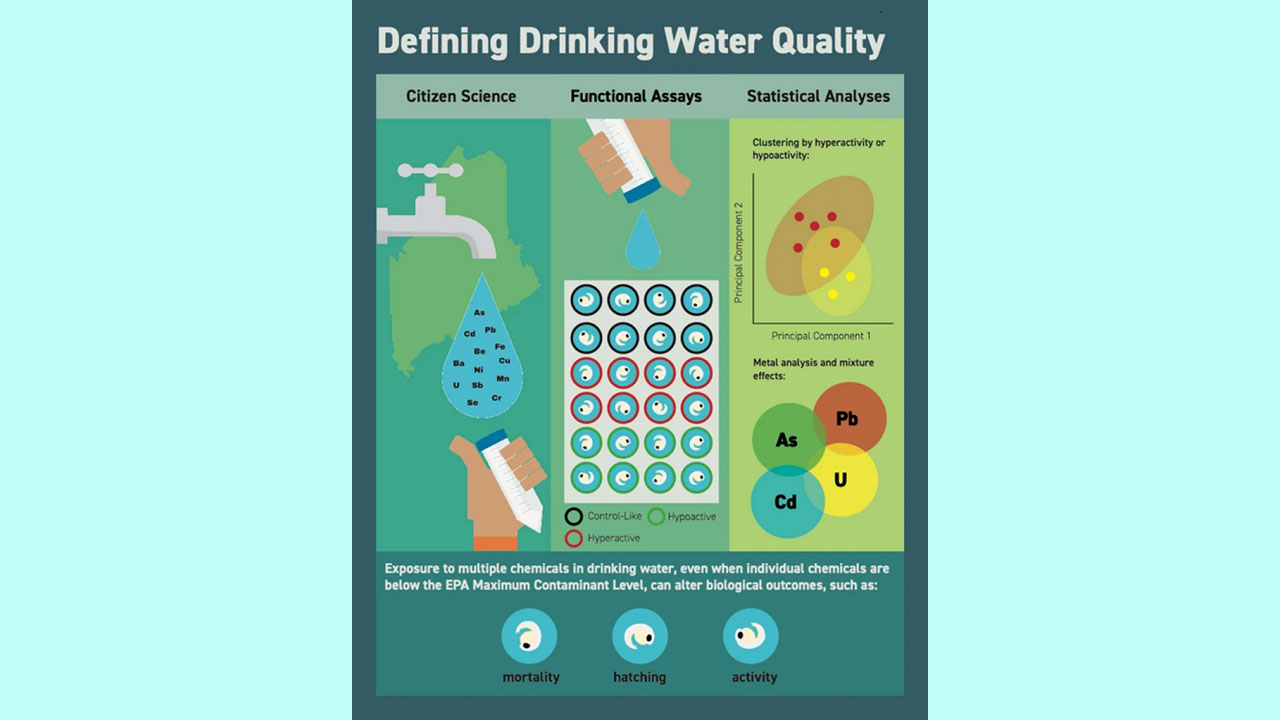Defining Drinking Water Metal Contaminant Mixture Risk by Coupling Zebrafish Behavioral Analysis with Citizen Science.

Abstract
Contaminated drinking water is an important public health consideration in New England where well water is often found to contain arsenic and other metals such as cadmium, lead, and uranium. Chronic or high level exposure to these metals have been associated with multiple acute and chronic diseases, including cancers and impaired neurological development. While individual metal levels are often regulated, adverse health effects of metal mixtures, especially at concentrations considered safe for human consumption remain unclear. Here, we utilized a multivariate analysis that examined behavioral outcomes in the zebrafish model as a function of multiple metal chemical constituents of 92 drinking well water samples, collected in Maine and New Hampshire. To collect these samples, a citizen science approach was used, that engaged local teachers, students, and scientific partners. Our analysis of 4016 metal-mixture combinations shows that changes in zebrafish behavior are highly mixture dependent, and indicate that certain combinations of metals, especially those containing arsenic, cadmium, lead, and uranium, even at levels considered safe in drinking water, are significant drivers of behavioral toxicity. Our data emphasize the need to consider low-level chemical mixture effects and provide a framework for a more in-depth analysis of drinking water samples. We also provide evidence for the efficacy of utilizing citizen science in research, as the broader impact of this work is to empower local communities to advocate for improving their own water quality.






